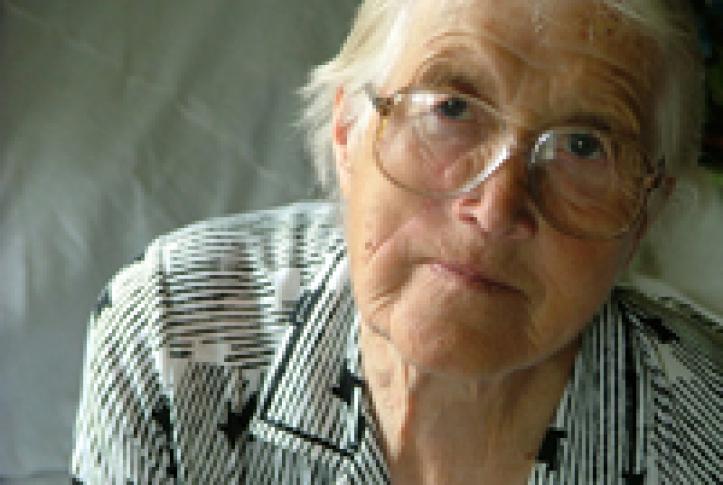Over the past few decades, consumer advocacy groups (CAGs) have sprung up across the country to combat long-standing problems in the nursing home industry. These grassroots organizations have achieved an impressive record of successes, with their influence clearly evident in the legislative arena.
Despite their effectiveness, many nursing home CAGs are "constantly operating on the edge of organizational failure," finds "It's a Family Affair: Consumer Advocacy for Nursing Home Residents in the United States" (Ageing & Society, Jan. 2008). Often, CAGs fail to develop the organizational
infrastructure necessary to ensure their continued existence and success, say the study's authors, who include Charles D. Phillips, Ph.D., M.P.H., of Texas A&M University, and Commonwealth Fund assistant vice president Mary Jane Koren, M.D., M.P.H.
Development of Citizen Advocacy
Approximately 1.6 million people—many with physical and cognitive impairments—receive care in roughly 16,000 nursing homes. In the 40-year history of such institutions, reports have documented abysmally poor care in many, as well as evidence of physical and psychological abuse. In response, the state and federal governments have developed an elaborate monitoring and regulatory structure. At the same time, nursing home CAGs came to life as a unique citizens' movement.
The authors found that the vast majority of CAGS (81%) began because of the founders' concerns about the care being provided to a parent, relative, or friend in a nursing home. While this "deep familial commitment," the authors note, is an important source of strength, it also a potential source of weakness. To be effective advocates for change, members must transform their personal feelings into broader altruism and make the transition from family member to leader.
Resources Needed
CAGs need more human and financial resources, the study found. Of 47 groups surveyed, the median number of members was 188 and the median number of active volunteers was 52. Fifty-four percent had no paid employees. Over 60 percent had an annual operating budget of $5,000 or less. The most common source of funds for CAGs was donations, often made by organization members rather than planned fundraising efforts.
More than half of respondents spent nearly three-quarters (73%) of their resources attempting to influence the quality of nursing home care, mainly through advocacy activities with legislatures or regulatory agencies. While the CAGs surveyed reported that funding and changes to organizational leadership were their biggest obstacles, they also indicated that fundraising and recruitment were not central ativities. On average, respondents said they spent 10 percent of time devoted to organizational maintenance and fundraising and 19 percent to recruitment.
When asked about their successes, they most often cited legislative achievements, like
increasing nurse aide training or enforcement, and providing public education about nursing homes and long-term care. Failures, alternatively, were more often viewed from an internal or organizational perspective. These include the inability to increase funding or to boost membership and visibility.
Understanding the Demise of a Consumer Advocacy Group
Interviews with members of eight inactive CAGs revealed "startlingly similar" reasons for their demise. "It was almost always due to the loss of the organization's original leader or the cumulative effects of the constant struggle to maintain adequate financial resources," the study notes. The authors liken CAGs to families held together by a single, core family member. When that person is no longer around and there is no viable replacement, the organization can fall apart or disappear.
Lessons Learned
Nursing home CAGs, while "active and important players" on the state and national level, are beset by challenges. "When almost 20 percent of CAGs note simple 'survival' as a major agenda item, one knows that this is not an advocacy sector filled with deeply entrenched, stable organizations," the authors write. The most serious threat to their continued operation—even more than financial failure—is a loss of leadership. The focus groups reveal, however, that few of the organizations have any plans for grooming future leaders. These
organizations cannot reasonably hope to attract younger altruists, but instead must focus on their core: middle-aged or elderly individuals who have translated their concern for a family member or friend to a commitment to improve nursing home care for all.
In the short term, the authors say, CAGs should continue to pursue their policy goals. "But for long-term success, the leaders of these groups must expend more of their human and financial resources developing stable funding streams and training new generations of leaders who will carry the group's goals into the future," they conclude.
Facts and Figures
- At the time of the survey, 21 states had
no operating consumer advocacy group. Nearly a quarter of a million nursing home residents—roughly one-sixth of all residents—lack support from local CAGs. - The majority (63%) of CAGs have been active for more than a decade.
- In addition to donations, CAGs receive revenue from members' dues (13%), foundation grants (13%), and funds from state agencies (16%).
- Nursing homes remain the primary focus of citizen advocacy in long-term care, although there was some focus on assisted living. Half of the CAGs surveyed did not work on home care issues.
